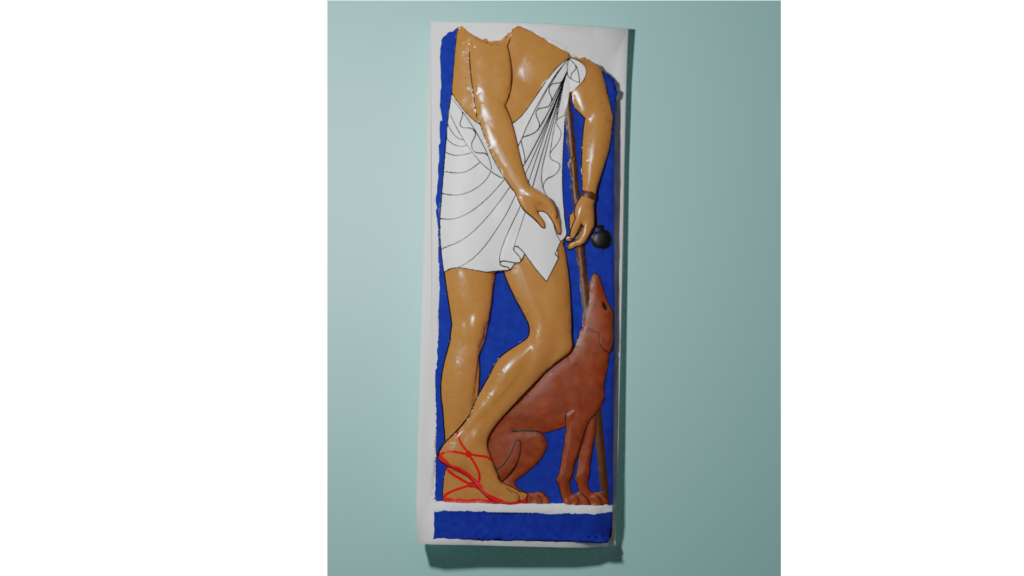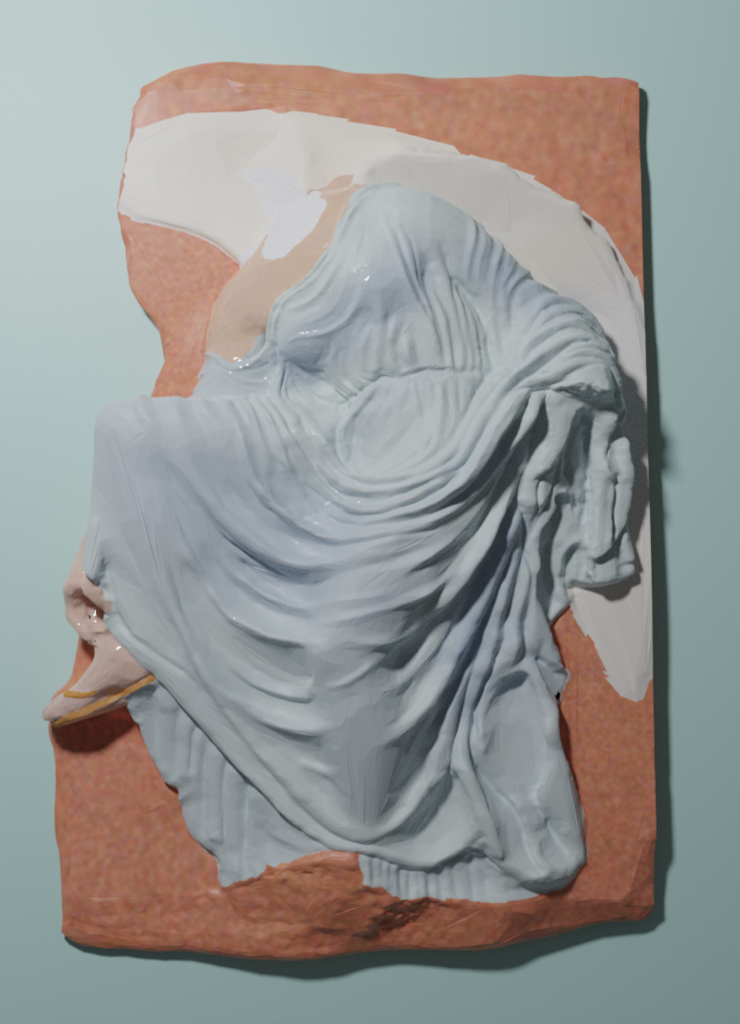Integrating Digital Technology and Ancient History
Work on this project was supported by a Digital Bryn Mawr Project Grant and by Library and Information Technology Services at Bryn Mawr College.
In learning about the ancient world, we are inundated with images of white bare stone sculpture and architecture in museums, libraries, popular media and video games. White marble sculpture has become synonymous with beauty in the modern world. But this is in contrast to the ancient perspective. Greek and Roman sculpture was elaborately painted in rich colors and patterns and it was only when a sculpture was painted that it was deemed to be beautiful. This sentiment is clearly expressed in Euripides’ play Helen,
“My life and fortunes are a monstrosity, partly because of Hera, partly because of my beauty. I wish I had been wiped clean like a painting and made plain instead of beautiful, and that the Greeks had forgotten the evil fate that I now have and remembered what is good, just as they now remember what is ill!” – Helen (Euripides, Helen 260-266)
Over time, paint wore off or was intentionally removed leaving us with a false understanding of ancient art. But how do you put color back into the ancient world? The Coloring the Past project combines research on the use of color and pigments on ancient sculpture with digital technologies to break the narrative of colorless marble. Using 3D modeling and projection mapping, the team created possible color reconstructions of two plaster casts of ancient sculpture housed in Rhys Carpenter Library at Bryn Mawr College. An animated, color layer is projected over the reliefs to demonstrate what they might have looked like in antiquity before their pigments were washed away.

